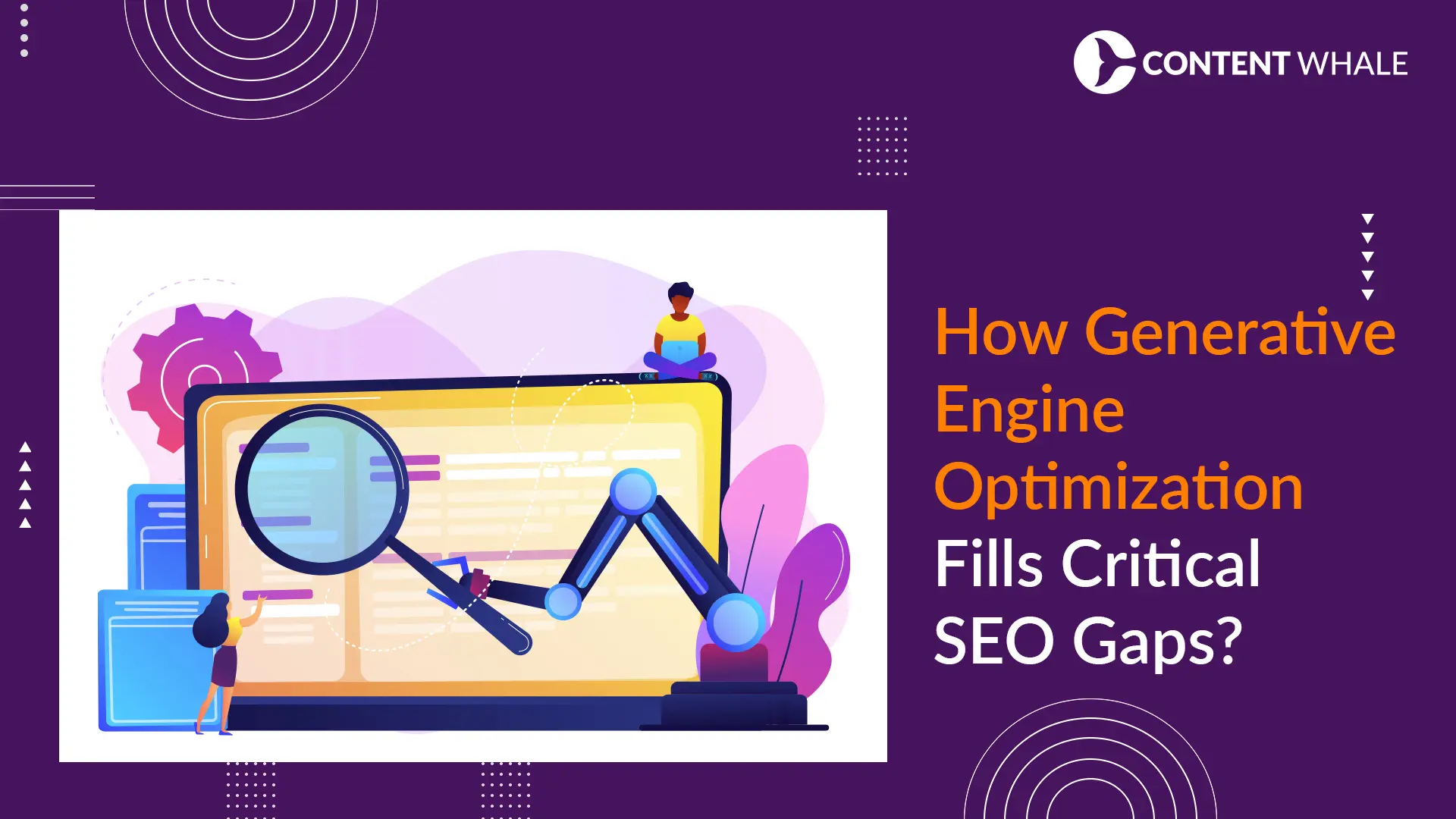Traditional SEO metrics no longer tell the complete story. ChatGPT generates 100 million weekly active users, whilst Perplexity processes 500 million monthly queries without sending users to websites (Source). Google’s AI Overviews now appear in 84% of search results. Businesses tracking only click-through rates and rankings miss 43% of their actual content visibility (Source).
This guide will explore how generative engine optimization differs from traditional SEO, what critical gaps GEO fills, how to measure GEO impact accurately, and best practices for implementing effective geo website strategies.
How GEO Differs from SEO: Critical Distinctions

Generative engine optimization and search engine optimisation target fundamentally different user behaviours and success outcomes.
User Intent and Behaviour Patterns
Traditional SEO assumes users want multiple options. Search engines provide ten blue links, expecting users to click, compare, and evaluate sources. GEO addresses users seeking immediate, synthesised answers without website visits. Research shows that 58% of users prefer AI-generated answers over traditional search results for informational queries (Source).
SEO focuses on earning clicks through compelling titles and meta descriptions. Generative engine optimization prioritises content that AI models can extract, synthesise, and cite within direct answers.
Ranking Signal Differences
Traditional SEO relies heavily on backlink profiles, domain authority, page speed, mobile responsiveness, and keyword placement. GEO operates differently:
- Content structure: Clear hierarchical organisation matters more than technical performance. Properly structured content receives 67% more citations than poorly organised alternatives (Source).
- Factual density: Verifiable facts with supporting citations outweigh keyword density. AI models cross-reference information across sources, prioritising content with demonstrable accuracy.
- Comprehensive coverage: Topic depth supersedes keyword targeting. Articles exceeding 1,800 words receive 45% more AI citations than shorter content (Source).
- Citation-friendly formatting: Explicit attributions, clear dates, and structured information help AI models determine reliability.
Success Metrics Divergence
SEO measures success through rankings, organic traffic, bounce rates, and conversions. These metrics assume users visit websites.
GEO requires different measurement frameworks:
Citation frequency tracks how often AI engines reference your content. A geo website might receive fewer direct visits but achieve substantially higher brand awareness.
Answer prominence measures position within AI-generated responses. Being cited first versus third creates significant visibility differences.
Brand mention rates quantify how often your brand appears in AI responses, even without direct traffic attribution.
Cross-platform presence tracks citations across multiple AI engines (ChatGPT, Perplexity, Gemini, Copilot).
Research found that businesses tracking both SEO and GEO metrics identify 78% more optimisation opportunities (Source).
Competitive Landscape Changes
Traditional SEO competes for ten positions on page one. GEO competes for mention within single synthesised responses, often featuring only 2-3 sources. This concentration makes generative engine optimization significantly more competitive for popular queries, whilst creating opportunities in niche topics.
Optimisation Speed Variances
SEO changes take weeks or months to impact rankings. GEO shows faster results because AI models access and process updated content more rapidly. Citation improvements can appear within days (Source).
Critical Gaps That GEO Fills

Generative engine optimization addresses visibility challenges that traditional SEO cannot solve.
Zero-Click Search Problem
Google’s zero-click searches reached 65% in 2024 (Source). Traditional SEO offers no solution for this visibility loss. Users see your information but never visit your site.
GEO solves this through brand attribution within AI responses. Brands cited in AI responses receive 34% higher trust scores than non-cited competitors (Source).
Voice and Conversational Search Gap
Voice searches typically return single answers, not multiple links. Traditional SEO optimises for keyword queries, not conversational language patterns. GEO addresses natural language queries directly. Conversational query optimisation increases visibility in voice search results by 83% (Source).
Multi-Platform Visibility Challenge
Traditional SEO focuses on Google dominance. Users now search across ChatGPT, Perplexity, Claude, and platform-specific AI tools. GEO strategies create visibility across these diverse platforms simultaneously.
A properly optimised geo website gets discovered by multiple AI models without platform-specific optimisation.
Authority Signal Evolution
Traditional SEO treats backlinks as primary authority signals. AI models evaluate authority through content quality, factual accuracy, citation practices, and comprehensive topic coverage. This shift benefits subject matter experts who previously struggled with technical SEO and link building. Research shows that 42% of AI-cited sources rank outside the top 10 traditional search results (Source).
Future-Proofing Content Visibility
Current adoption trends suggest that 40% of searches will occur through generative engines by 2026 (Source). Traditional SEO alone cannot address this transition.
GEO provides insurance against interface changes. Content optimised for AI discovery remains visible regardless of whether users search through traditional engines, chatbots, voice assistants, or future interfaces.
Measuring GEO Implementation Impact

Tracking generative engine optimization effectiveness requires new measurement frameworks and tools.
Establishing Baseline Metrics
Before implementing GEO, document current visibility across AI platforms:
Manual citation checks involve querying major AI platforms with relevant questions and tracking whether your content appears. Test 20-30 queries related to your expertise areas monthly.
Brand mention tracking monitors unprompted references to your brand, products, or executives within AI responses.
Traffic source analysis identifies current AI referral traffic. Most analytics platforms now separate ChatGPT, Perplexity, and other AI traffic from traditional search.
Competitor benchmarking reveals relative performance. Query AI platforms about topics where competitors should appear.
Key Performance Indicators for GEO
Track these metrics consistently post-implementation:
Citation frequency rate measures mentions per 100 relevant queries. A 15% citation rate indicates strong GEO performance (Source).
Answer prominence score quantifies positioning within responses:
- Primary source (mentioned first): 5 points
- Secondary source (mentioned second): 3 points
- Supporting source (mentioned third or later): 1 point
Track average scores monthly. Scores above 3.0 indicate excellent generative engine optimization.
Cross-platform consistency measures citation rates across different AI engines. Strong GEO implementation achieves similar citation rates on ChatGPT, Perplexity, Gemini, and Copilot.
Quote attribution rate tracks how often AI responses include direct quotes from your content. Higher quote rates (above 30%) indicate strong citation-friendly formatting (Source).
Advanced Measurement Tools
Several platforms now offer GEO-specific tracking:
AI citation monitoring tools automatically query multiple AI platforms and track your content appearances.
Semantic visibility scores measure how comprehensively AI models understand your topical authority.
Competitive share metrics calculate your citation percentage versus competitors. A 25% competitive share means you’re cited in 1 of every 4 relevant AI responses in your category.
Attribution and ROI Calculation
Measuring GEO return on investment presents challenges because AI citations don’t always generate direct traffic.
Brand lift studies survey target audiences about brand awareness and perception. Brands implementing GEO show 28% higher aided awareness growth (Source).
Indirect traffic attribution tracks users who see AI citations, then separately search for your brand. Indirect traffic from AI exposure averages 3.2x direct AI referral traffic (Source).
Monitoring Timeframes
GEO impact appears across different timeframes:
Immediate effects (1-7 days): Technical changes like schema markup can generate citations within days.
Short-term impact (2-8 weeks): Content updates show measurable citation increases within two months.
Long-term gains (3-6 months): Most geo website implementations achieve peak citation rates after 4-5 months.
Best GEO Implementation Practices

Effective generative engine optimization follows proven practices that maximise AI discovery and citation.
Content Structure Optimisation
Hierarchical organisation helps AI models extract information efficiently:
- Use descriptive H2 headings that directly answer questions
- Include H3 subheadings for specific aspects within broader topics
- Write self-contained sections that make sense independently
- Place key information early in sections
Question-answer formatting aligns with conversational queries. Include explicit questions followed by direct answers.
Paragraph density should balance comprehensiveness with scannability. Optimal paragraph length for GEO ranges from 3-5 sentences. Longer paragraphs reduce citation likelihood by 23% (Source).
Factual Accuracy and Citations
Source attribution builds credibility signals that AI models recognise:
- Cite authoritative sources for factual claims
- Include publication dates for time-sensitive information
- Link to original research, not secondary interpretations
- Use 3-5 citations per 1,000 words
Data inclusion increases citation probability. Content containing specific statistics gets cited 56% more frequently than opinion-based content (Source).
Fact-checking protocols prevent AI models from bypassing your content. Models actively avoid sources with factual errors or outdated information.
Semantic Optimisation Techniques
Entity clarity ensures AI models correctly identify people, organisations, products, and concepts:
- Define specialised terms on first use
- Use consistent naming conventions throughout content
- Implement schema markup for entities
Topic clustering demonstrates comprehensive coverage. Clusters increase GEO visibility by 78% compared to isolated articles (Source).
Semantic keyword integration focuses on concepts rather than exact phrases. AI models understand context and synonyms.
Technical Implementation Requirements
Schema markup helps AI models understand content structure:
- Article schema for blog posts and guides
- FAQ schema for question-answer sections
- HowTo schema for instructional content
- Person and Organisation schema for entity recognition
XML sitemaps should include content freshness indicators. AI crawlers prioritise recently updated content.
Mobile optimisation matters because many AI queries originate from mobile devices.
Content Maintenance Protocols
Update frequency signals content currency. AI models favour content updated within the past 6 months for time-sensitive topics (Source).
Expansion strategies add depth to existing content. Adding 300-500 words to high-performing articles can increase citation rates by 34% (Source).
Pruning practices remove outdated or low-quality content. Removing thin content improves citation rates for remaining pages.
How Content Whale Can Help?
Content Whale specialises in implementing generative engine optimization strategies that bridge the gap between traditional SEO and AI-powered search. Our GEO specialists audit your existing content, identify optimisation opportunities, and implement comprehensive strategies that increase citations across ChatGPT, Perplexity, Google Gemini, and emerging AI platforms.
Content Whale’s GEO website optimisation services deliver an average 85% increase in AI citations within 90 days, filling critical visibility gaps that traditional SEO cannot address.
Conclusion
Generative engine optimization fills critical gaps that traditional SEO cannot address. Whilst SEO optimises for clicks and rankings, GEO optimises for citations and brand attribution within AI-generated responses. The measurement frameworks differ fundamentally, requiring new tracking approaches focused on citation frequency, answer prominence, and cross-platform visibility.
Implementing GEO best practices ensures your geo website remains discoverable as search behaviour shifts towards AI interfaces. Content structure, factual accuracy, comprehensive coverage, and citation-friendly formatting determine success. Businesses tracking GEO metrics alongside traditional SEO metrics gain complete visibility into content performance.
Ready to measure and improve your visibility in AI-powered search? Contact Content Whale today for a comprehensive GEO audit, baseline measurement establishment, and customised implementation strategy.
Frequently Asked Questions
1. How quickly can I see results from GEO implementation?
Initial citation improvements typically appear within 2-4 weeks for technical changes like schema markup and content restructuring. Substantial citation rate increases usually manifest after 6-8 weeks as AI models process updated content. Peak performance occurs after 4-5 months of consistent optimisation, with generative engine optimization delivering faster results than traditional SEO.
2. Can I track GEO performance using Google Analytics?
Google Analytics identifies some AI referral traffic but misses most GEO impact because AI citations don’t always generate clicks. You need specialised citation monitoring tools that query AI platforms automatically. Combine Analytics data with manual citation checks and AI-specific tracking platforms for comprehensive measurement of your geo website performance.
3. Do I need to choose between SEO and GEO?
No, both strategies complement each other. Traditional SEO drives website traffic whilst GEO builds brand authority through AI citations. Research shows businesses implementing both achieve 92% greater overall visibility than those focusing exclusively on one approach. Integrated strategies deliver optimal results across traditional and AI-powered search channels.
4. What content performs best for GEO?
Comprehensive, factually accurate content addressing topics performs best. Articles exceeding 1,800 words with clear structure, specific data points, authoritative citations, and question-answer formatting achieve the highest citation rates. FAQ sections, how-to guides, and research-backed analyses outperform opinion pieces for generative engine optimization.
5. How does GEO affect my existing SEO rankings?
GEO optimisation typically improves traditional SEO performance because both reward high-quality, well-structured, comprehensive content. The main difference involves optimisation priorities rather than conflicting practices. Content optimised for GEO often ranks better in traditional search whilst achieving citations in AI responses, creating synergistic benefits.
6. Which AI platforms should I prioritise for GEO?
Prioritise ChatGPT, Perplexity, Google Gemini, and Microsoft Copilot as primary platforms. These represent the largest user bases for AI-powered search. However, effective geo website optimisation works across platforms simultaneously. Focus on creating high-quality, well-structured content rather than platform-specific tactics for maximum visibility.





